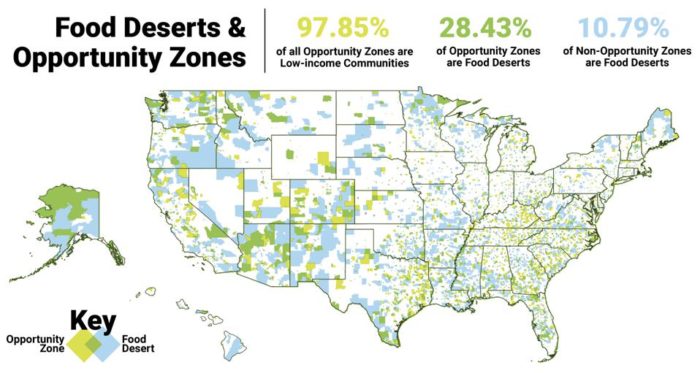
As part of the 2017 Tax Cuts & Jobs Act, the opportunity zones incentive was created to revitalize economically distressed communities by spurring long-term private investments. While not a stand-alone solution to food insecurity, the more than $12 billion raised by Qualified Opportunity Zone Funds mean the federal tax incentive has the potential to become one of the most impactful interventions in food deserts to date.
Cross-referencing location data reveals that roughly 30% of food deserts nationwide are located within opportunity zones. This overlap represents roughly 31 million people who live in an opportunity zone that is co-located as a USDA food desert.
Food hubs like markets and co-ops can increase food access, economic growth and equity, but can also act as a gathering place that brings people together from different socioeconomic and cultural backgrounds. The Fredericksburg Co-op is a community-owned grocery store scheduled to open in an opportunity zone in early 2021. It will serve a population of 28,000 and aims to be a place where people and ideas come together to solve local challenges. The co-op will provide healthy and local food, nutrition education, food preparation and cooking classes, as well as offer a 20% discount to customers using food assistance programs. From an economic development and equity standpoint, Fredericksburg Co-op founder Rich Larochelle explains that “building local capital requires money to stay local and be invested back into the community, and because of this, we will focus on hiring locally and paying employees a living wage.”
The co-op also aims to transform local agriculture by bridging the gap between farmers, market opportunities, and consumers to increase efficiency and success. Co-ops typically sell “20% local products, whereas normal grocery stores are roughly 1–2%,” explains Larochelle, and delivering accurate pricing information and demand certainty to farmers can only increase those opportunities.
Keep reading at Forbes:


